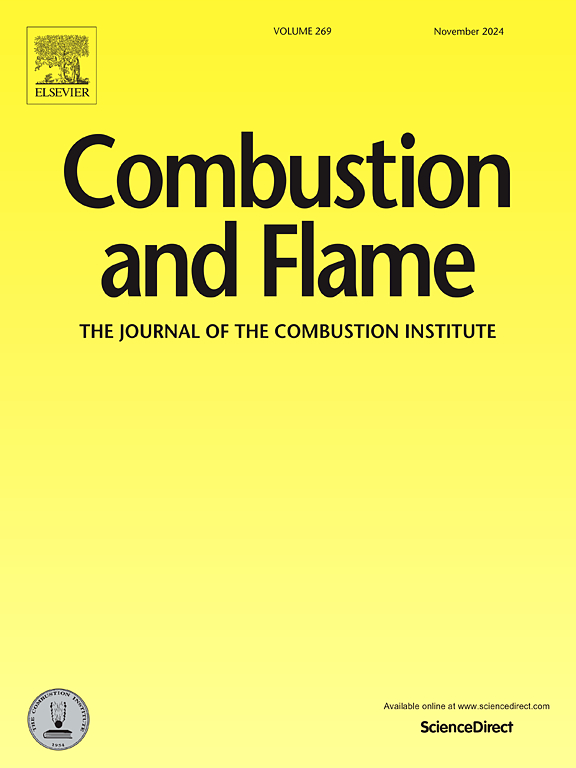Filtered Rayleigh scattering thermometry in premixed flames—Part I: Laminar flames and the effects of mixture composition approximation
IF 5.8
2区 工程技术
Q2 ENERGY & FUELS
引用次数: 0
Abstract
Filtered Rayleigh scattering (FRS) is a proven laser-based measurement technique that can be used to determine gas-phase properties in the presence of interference from unwanted surface or particulate scattering. In combustion environments, an important issue for conversion of measured FRS signals into temperature is the strong dependence on the local gas mixture composition. Previously, the importance of accurately characterizing the local chemical state has not been systematically evaluated in terms of FRS-based thermometry. Simultaneous quantitative measurements of all pertinent species are quite challenging and involve complex and expensive experimental setups. Thus, there have been previous FRS-specific approaches developed to approximate species composition that circumvent additional multi-scalar measurements. This paper is one of a two-part series that first seeks to evaluate the sensitivity of derived temperature estimates to the local composition and assess existing simplifying assumptions for approximating the unknown composition in laminar premixed flames. This paper uses a combination of simulations and experiments in laminar premixed flames of various fuels and equivalence ratios to understand the importance of composition knowledge/approximation for accurate FRS thermometry results. In general, results show that there is a need to reliably represent the most abundant species and their associated Rayleigh–Brillouin scattering spectral contributions. Approximations of the local composition by a single species lead to significant error (up to 50%) and non-physical results over a broad range of flame conditions. Finally, a simple but robust framework based on state relations from laminar flame calculations is recommended for accounting for composition effects. This approach leads to accurate (2% error) and reliable FRS-based temperature results in laminar premixed flames without the need for simultaneous species concentration measurements.
求助全文
约1分钟内获得全文
求助全文
来源期刊

Combustion and Flame
工程技术-工程:化工
CiteScore
9.50
自引率
20.50%
发文量
631
审稿时长
3.8 months
期刊介绍:
The mission of the journal is to publish high quality work from experimental, theoretical, and computational investigations on the fundamentals of combustion phenomena and closely allied matters. While submissions in all pertinent areas are welcomed, past and recent focus of the journal has been on:
Development and validation of reaction kinetics, reduction of reaction mechanisms and modeling of combustion systems, including:
Conventional, alternative and surrogate fuels;
Pollutants;
Particulate and aerosol formation and abatement;
Heterogeneous processes.
Experimental, theoretical, and computational studies of laminar and turbulent combustion phenomena, including:
Premixed and non-premixed flames;
Ignition and extinction phenomena;
Flame propagation;
Flame structure;
Instabilities and swirl;
Flame spread;
Multi-phase reactants.
Advances in diagnostic and computational methods in combustion, including:
Measurement and simulation of scalar and vector properties;
Novel techniques;
State-of-the art applications.
Fundamental investigations of combustion technologies and systems, including:
Internal combustion engines;
Gas turbines;
Small- and large-scale stationary combustion and power generation;
Catalytic combustion;
Combustion synthesis;
Combustion under extreme conditions;
New concepts.
 求助内容:
求助内容: 应助结果提醒方式:
应助结果提醒方式:


